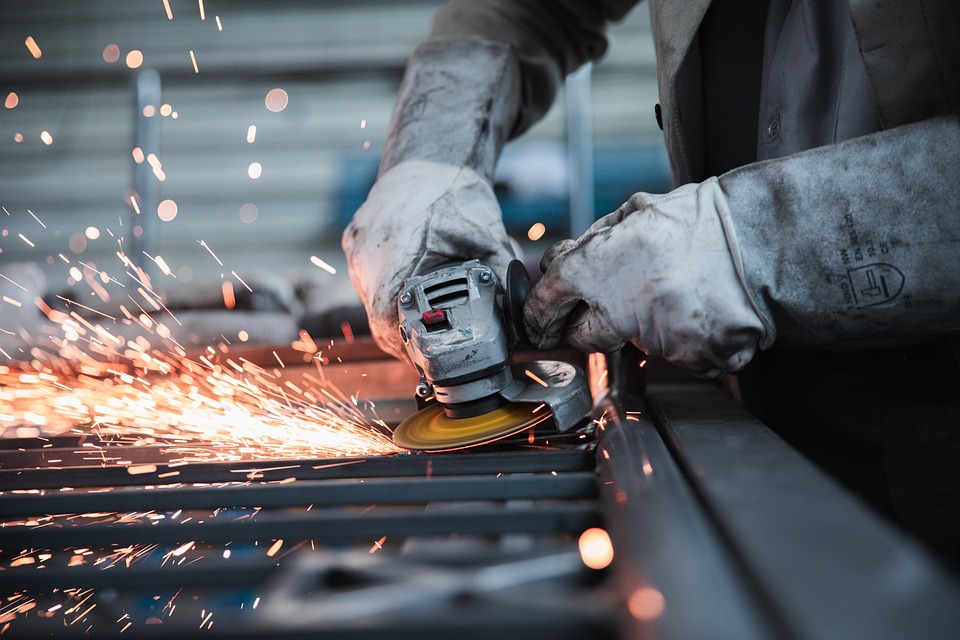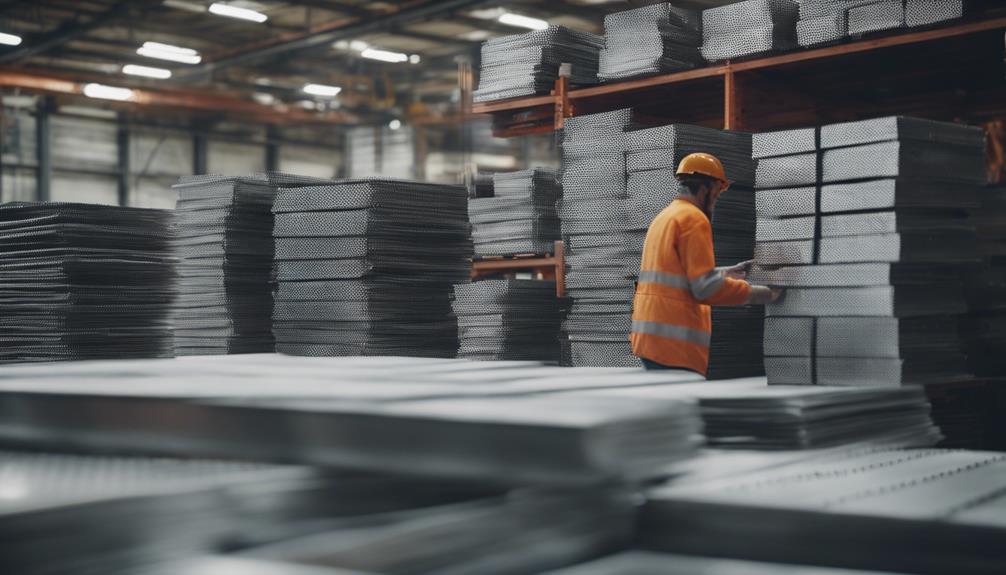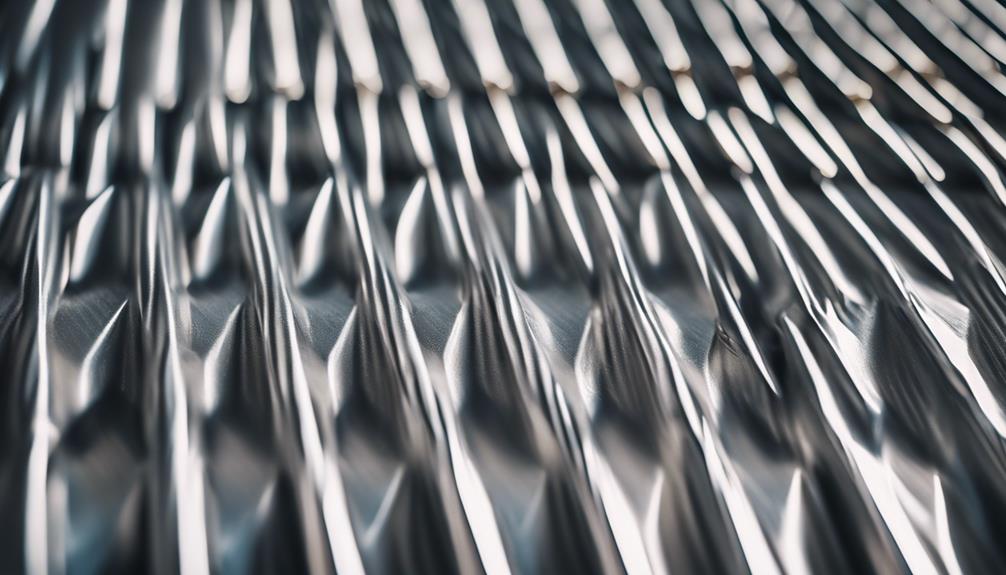Hollow tubes play a crucial role in providing structural support, reducing weight, enabling efficient fluid flow, and offering versatility in various industries. Their significance lies in enhancing modern manufacturing and engineering practices through their diverse applications and benefits.
Key Takeaways
- Hollow tubes provide structural support efficiently.
- Available in various sizes, materials, and shapes.
- Enable efficient fluid or gas flow.
- Reduce weight and material usage.
- Highly adaptable and versatile for different industries.
Importance of Hollow Tubes
Hollow tubes are essential components in various industries due to their unique ability to provide structural support while minimizing weight and material usage. These tubes offer a versatile solution for applications in aerospace, automotive, and manufacturing industries. Beyond their structural function, hollow tubes also facilitate efficient fluid or gas flow through their interior, enhancing overall functionality. One significant advantage is the ability to custom-design these tubes to meet specific length, diameter, and material requirements, making them highly adaptable to diverse needs. In engineering projects, hollow tubes play a crucial role in reducing costs, improving efficiency, and ensuring durability. Their impact extends across various sectors, showcasing their importance as a fundamental element in modern industrial applications.
Different Types of Hollow Tubes
Discussing the diversity in construction materials, various types of hollow tubes cater to specific industry requirements and design specifications. These tubes come in a range of sizes, materials, and shapes to meet different application needs. Commonly utilized in industries like automotive, aerospace, and construction, hollow tubes provide structural support and facilitate fluid transport. Materials such as stainless steel, carbon steel, aluminum, and titanium are frequently used in manufacturing these tubes. Hollow tubes are preferred for their combination of strength, durability, and lightweight properties, making them essential components in various structures. Their versatility allows for customization to meet specific engineering requirements and design preferences.
Applications of Hollow Tubes
Applications of hollow tubes span across various industries, showcasing their versatility and indispensability in providing structural support and facilitating specialized functions. In the aerospace sector, hollow tubes are favored for their lightweight properties, making them ideal for structural components. Automotive applications benefit from their excellent strength-to-weight ratio, commonly seen in exhaust systems and roll cages. Hollow tubes play a pivotal role in the medical field, being used for surgical instruments and implantable devices due to their biocompatibility. In the oil and gas industry, these tubes are essential for drilling components and extraction tools. Additionally, hollow tubes are widely employed in general engineering for structural support, fluid transfer systems, and various mechanical applications, highlighting their wide-ranging utility.
Advantages of Hollow Tubes
With their ability to guarantee material waste, reduce machining requirements, and provide high-quality raw material stock, hollow tubes offer a range of advantages that enhance efficiency and cost-effectiveness across various industries. By utilizing hollow tubes, manufacturers can markedly reduce material waste during the production process, leading to cost savings and environmental benefits. The diminished machining requirements associated with hollow tubes save time and resources, making them a cost-effective option for many applications. Additionally, the high-grade raw material stock provided by hollow tubes ensures consistent and reliable performance in various industry settings. Overall, hollow tubes present an economic means of supplying materials for production, making them a sensible alternative to solid bars and contributing to improved efficiency and cost-effectiveness.
Factors to Consider When Choosing Hollow Tubes
When selecting hollow tubes for a project, it is important to thoroughly assess the material composition to ensure suitability for specific application requirements. Additionally, take into account the outer diameter and length of the tube to guarantee a proper fit for your project. Checking the aperture size is essential to determine compatibility with other components or accessories. Furthermore, look for package quantities that meet your project needs, whether in bulk or small quantities. Customer reviews can provide valuable insights into the tube's performance, durability, and versatility. By considering these factors, you can make an informed decision when choosing hollow tubes for your project.
How to Properly Install Hollow Tubes
To guarantee a successful installation of hollow tubes, meticulous attention to cleanliness and precision is essential. Before installation, make sure the hollow tube is clean and free of any debris. The use of appropriate tools such as a tube cutter is vital to achieve precise cuts for a proper fit. Secure the hollow tube in place using compatible connectors or fittings to prevent any movement or leaks. After installation, inspect the installed hollow tube carefully for any leaks or cracks that could lead to potential issues. Always adhere to the manufacturer's guidelines and specifications to ensure the correct installation process is followed, which will contribute to the longevity and efficiency of the hollow tube system.
Maintenance Tips for Hollow Tubes
For peak performance and longevity of hollow tubes, implementing regular maintenance practices is essential. To guarantee this, clean the hollow tube regularly to prevent debris buildup and corrosion. Additionally, inspect the tube for cracks or damage to maintain its structural integrity. It is vital to lubricate moving parts within the hollow tube for smooth operation. When not in use, store the hollow tube in a dry and covered area to prevent rust and deterioration. Following the manufacturer's guidelines for specific maintenance requirements is paramount to preserve the tube's functionality. By adhering to these maintenance tips, you can extend the lifespan of your hollow tubes and optimize their performance.
Innovative Uses of Hollow Tubes
Hollow tubes showcase versatile applications across industries, serving as vital components in various innovative projects. They play a pivotal role in extending wires for mounting purposes in clock refurbishment projects and are well-suited for creating miniature axles and frames in industrial settings. Offering a lightweight and durable solution, hollow tubes are commonly used for structural support in a wide range of projects. Their customizable lengths and diameters enable precision and versatility in design, making them ideal for model-making, jewelry crafting, and miniature construction. With their unique properties, hollow tubes continue to be a go-to choice for professionals seeking reliable and efficient solutions in their creative and technical endeavors.
Frequently Asked Questions
What Is a Hollow Tube?
A hollow tube is a cylindrical structure with an empty interior space. It serves various industries for structural support, fluid transport, and material containment. Its hollow design offers strength, stiffness, and weight reduction, making it versatile for engineering and construction applications.
What Is Hollow Tubing?
Hollow tubing is a structural component with an empty space inside, commonly used in industries for its lightweight, strength, and versatility. It allows for efficient material usage, reducing weight and costs while maintaining integrity.
What Is the Function of Hollow Tube?
Hollow tubes serve vital functions in various industries by providing structural support, minimizing weight, and facilitating the passage of fluids or components. Customizable and made from materials like steel and aluminum, they enhance design flexibility and efficiency in engineering applications.
Is a Hollow Tube Stronger Than a Solid Bar?
In the comparison between a hollow tube and a solid bar, the hollow tube can exhibit greater strength due to its efficient distribution of material, leading to higher strength-to-weight ratios and improved resistance to torsional forces.










